Level design is about being creative, engaging the players and leading them through your game. Depending on the type of game, the way you design levels and what tools you use may vary.
What happens when indie game designers are challenged to make a level using Super Mario Maker? Which lessons can they teach other budding designers? That is exactly what we are exploring in today’s Development Blog.
We had an experience a few weeks ago that inspired us to write this Blogpost. We were invited to showcase Shadow Puppeteer at EGX at Nintendo’s stand as one of the Nindies this year. A few weeks before departure we were approached with an interesting challenge: Could we make a level using the new game Super Mario Maker and present it at EGX. Just as when life gives asks if you want delicious chocolate cake we said “OMG YES!”.
For those who do not know; Super Mario Maker is a game where you can create your own Super Mario levels, share them online and play the levels of other creators.
This was our first time trying Super Mario Maker and we were not sure of what to expect. We found that this kind of editor program can be a good way of getting into the process of level design and so we want to take this opportunity to share some advice on the topic. Using our development on the Super Mario Maker level “Super Shadow Puppeteer” as an example, we are now going to go through our preferred steps in level design.
Disclaimer: Personal preferences and experiences may vary
Level design
Anyone can be a “level designer” and many people want to be. Being a GOOD level designer on the other hand is not as easy. Of course most games will have completely different focus, goals and styles but a lot of the steps are, at it’s core, the same.
1. Get to know the tool and what mechanics are available
This can take some time, but when you are completely familiarized with the possibilities, you can create better and more creative levels.
In SMM you have to gradually unlock styles, items and effects. Having to do this might seem like a hassle, but the game wants to give you the chance to get properly familiarized with your options. By trying out every item and experimenting with them, you will be able to unlock these things faster.
Tip: Go wild, place out loads of items, don’t worry about making things “perfect” in this stage. The more items are placed out in the level, the faster the unlocking process goes.
2. Decide on your target audience and adjust the difficulty
You want to think about what kind of people you want to play your game/level. How old are they? What are they looking for in a game? Are they experienced or inexperienced? Do they want to explore, do they want a challenge, or do they want to collect everything?
This is of course a huge process including the choice of platform, genre etc. For SMM it gets a bit less complicated, although it does not become any less important.
What kind of level you want for SMM depends on what kind of players you will have. Will you target the hardcore people who want a challenge or the more relaxed Mario-fans? Difficult is not always the same as “fun”. A creator may enjoy seeing players fail when trying the level, but the player may end up with frustration. Decide on the player type and the level of difficulty.
Feel free to challenge the players, but remember that SMM does not have checkpoints.
[Breaking news!] Super Mario Maker will, on the 4th of November, come with a free update that adds checkpoints!
Still, long levels shouldn’t be too frustrating, and super difficult levels should be short or have well placed checkpoints, and have something in them to motivate the players.
Cool tip from IGN tip-site: “You can also create short-cuts that players discover after getting to a halfway point. For example, a pipe halfway through the level could show a way to get back to the beginning — and vice versa.”
For our level we knew that the main crowd would be the people at EGX – a consumer- focused game conference. Wanting to reach our own fans, we decided to follow the vision of Shadow Puppeteer: Not too difficult, more fun than frustrating, making the player feel clever. Having fun without too much risk of dying. Giving the player a challenge in movement and puzzles rather than avoidance of death.
3. Decide main gameplay – Core
Choose a style and a few mechanics – build everything from that. What will the main verbs be of your level? Jumping, sliding, shooting, ducking, exploring, solving riddles.
Many people will be worried about not having enough variety in the game. The important thing is to focus on depth, not just complexity. You can make a great game, only focused on one mechanic . Make sure that you have explored that one mechanic as much as possible, then explore it some more. Then look at adding other mechanics.
In SMM it might seem like you have limited options of what you can focus on, but you would be surprised of what you might be able to make if you just get creative. You could probably make something way out there, that no one would ever think was possible.
For our level we thought it would be cool to make a level reminiscent of Shadow Puppeteer. We were attending EGX to showcase our game after all.
The core of Shadow Puppeteer lies in synchronized platforming and riddle solving between two people. Using lights and shifting gravity as a major diversifier. As SMM does not have 2 player mode, light mechanics or shifting gravity we felt a bit restricted.
But the Super Mario series and Shadow Puppeteer share some similarities in gameplay and we found a Mario-style with a world that could provide us with the right look.
4. Outline the “narrative” of the gameplay
Just like a symphony has different movements with distinct feel and tempo, you want to create a dynamic level “narrative”. That is to consider the player’s experience throughout the level. What do they feel in the beginning? What about later? Their experience should develop and their mood change to give them a rewarding and satisfying experience.
There is a typical formula in level design: First you introduce a gameplay element, then you repeat the action, letting the player get used to the mechanic, before expanding the use or variety. After several of these introductions, you can put the player to the final test (usually a time trial or boss-level, but be creative).
For our level we wanted the experience and difficulty to mirror Shadow Puppeteer.
Taking inspiration from specific levels, we created a main level that was all about casual exploration, and a sub – level that imitated two thrilling chase sequences.
The sub – level was intended as a direct contrast to the main level, although the level of difficulty is not that different. The perceived danger and threat is bigger than it actually is.
5. Sketch out the main elements, leave room for creativity
With step 3 and 4 in mind, you probably already have some great ideas for sections of gameplay and for an overall flow. Sketching this out on paper is a quick and easy way to plan the level, before making it.
You have to realize, though, that you will not be able to plan every brilliant idea beforehand. Leaving some room in the level in between sections of planned gameplay is advisable. It gives you room to be inspired by the tool you are using. As you set up planned gameplay elements in the level you will most likely get some good ideas. If you want to plan things properly, you could just write down what kind of in-between gameplay would be best suited for your “narrative.” Like if you just gave your player a challenge, giving them a reward or something fun but easy can be a good way to give them a breather before the next challenge.
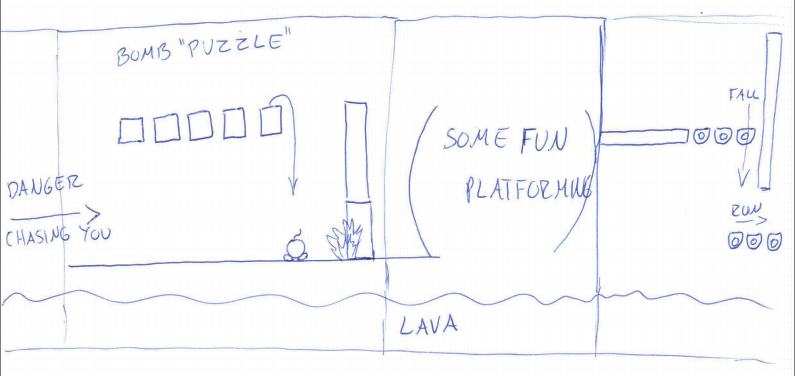
Although sketches are useful, some are better at drawing than others. Still, it’s about communicating an idea, not winning an art award.
For our level we chose unique styles for the main and sub – areas. The Main level had organic platforms, some static and some dynamic. It featured vines to swing from and donut blocks to give a little simple thrill, and a few small, shelled enemies. This area had several routes to choose from and many nice little treats to find.
Our sub – level was dominated by “man-made” things: bricks and pipes, walls and windows. We added lava and bombs as central elements to stress the player and to challenge them under pressure. Here we were very careful to make sure that the player was stressed, but not very likely to die; like providing mushrooms where we knew they might take a hit from some Twompers.
6. Test to make sure the flow and “narrative” feels right
Make sure to play through the level several times and see if the flow feels right and the difficulty is appropriate. Get other people in that have never tried your level before. You will learn a lot from how they choose to progress, and from where they end up failing.
Super Mario Maker has a really good setup here, going into the level editor every time you die and letting you play from where you last left off. It really makes the process of tweaking and polishing easier and more enjoyable.
Add in extra elements here like coins to guide the player and decoration to make the level look nicer. Some extra rewards can also be added to slow the players down or give an extra optional challenge.
Conclusion
Designing a level can be more than just messing around in an editor, but how you choose to go about it is up to you. The important thing is to think about what kind of experience you want players to have, understanding their preferences and to always be open for iterations.
We were quite happy with our Super Mario Maker Level and had loads of fun making it. We hope that our examples have been helpful and inspirational. If you wish to try out
“Super Shadow Puppeteer” you can find it here:
AB9A-0000-00C7-4C26
If you have any level design tips or strategies that you want to share, or have an amazing Super Mario Maker – level that you want us to try out, please leave us a comment.
We would love to see levels going for different genre styles.
Our project manager, Marianne was interviewed about our level during EGX.
Here is the video-interview and showing of the level, made by Wii U UK.

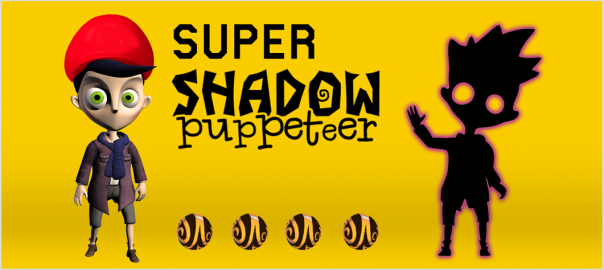
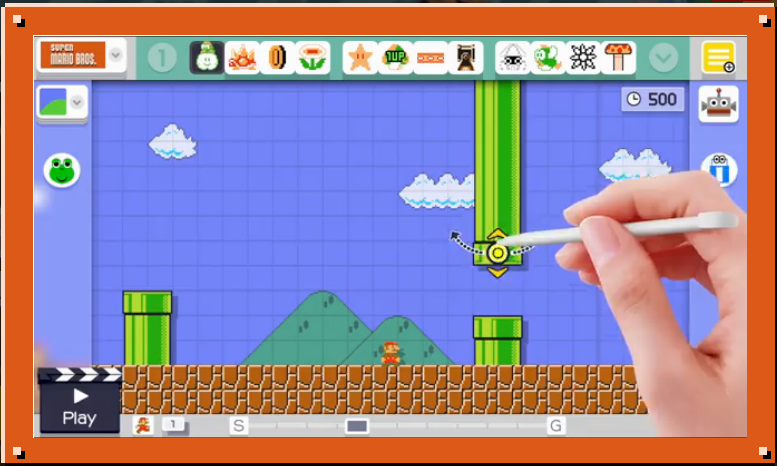
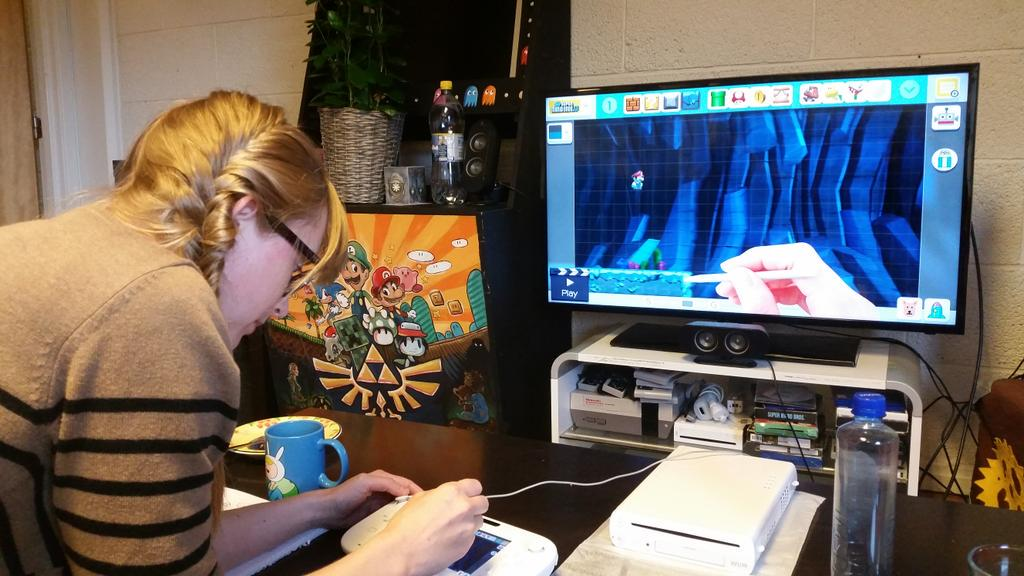
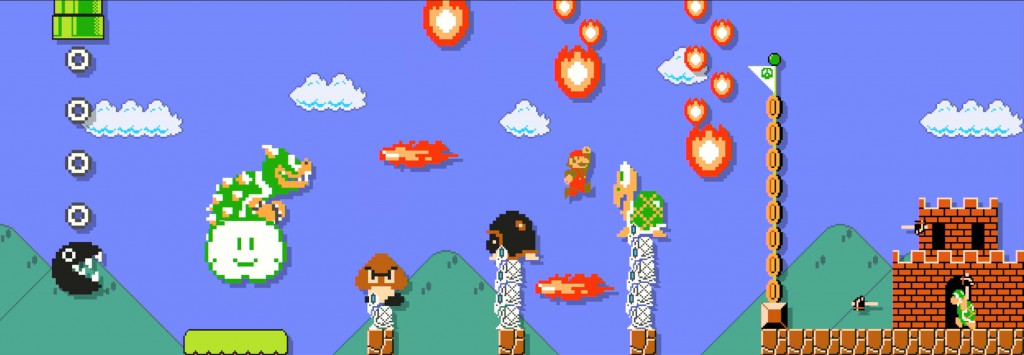
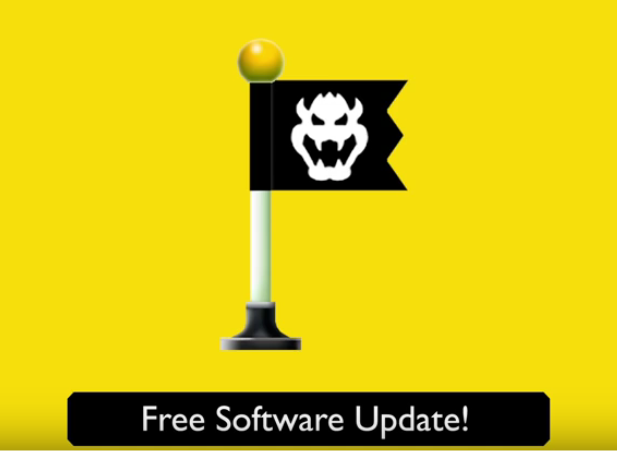
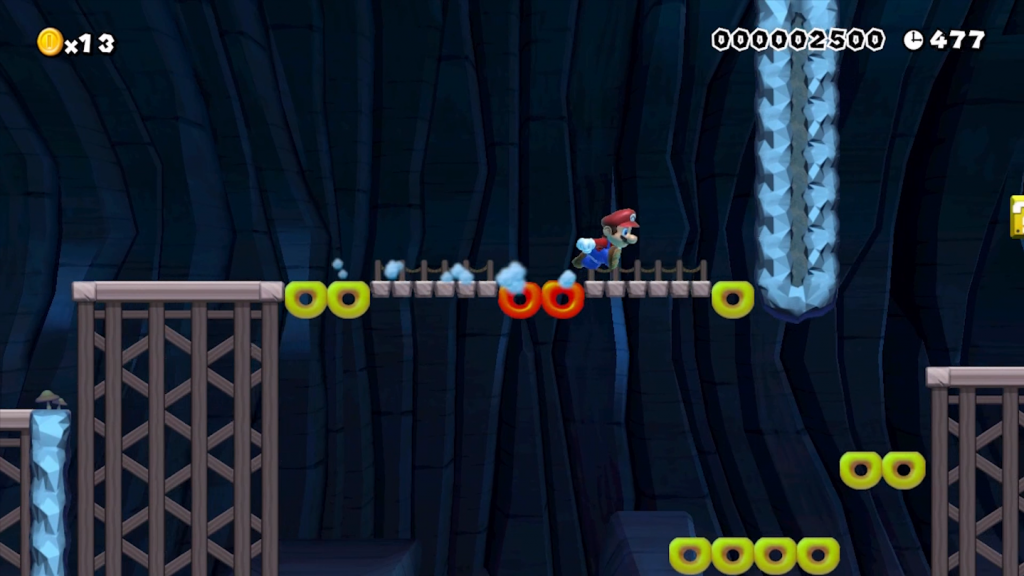
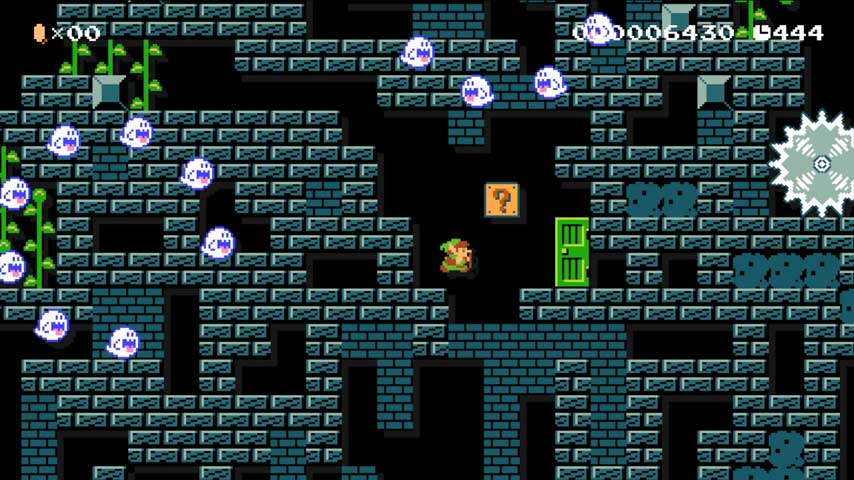
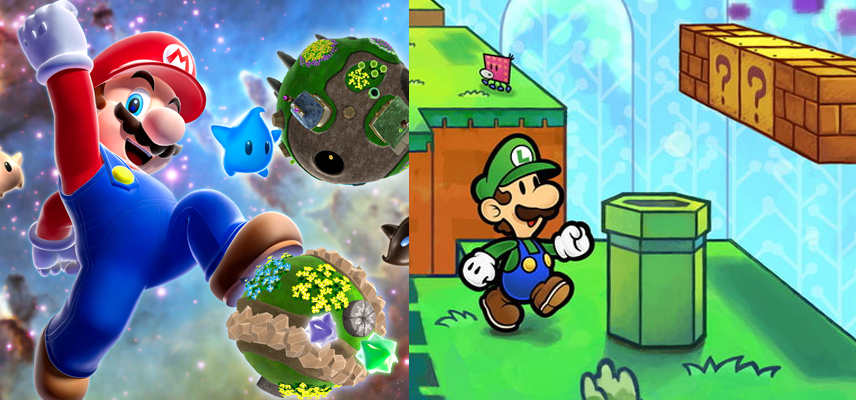
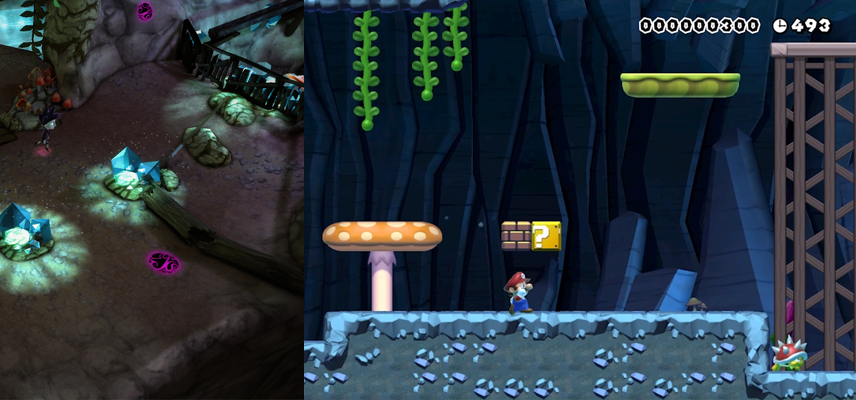
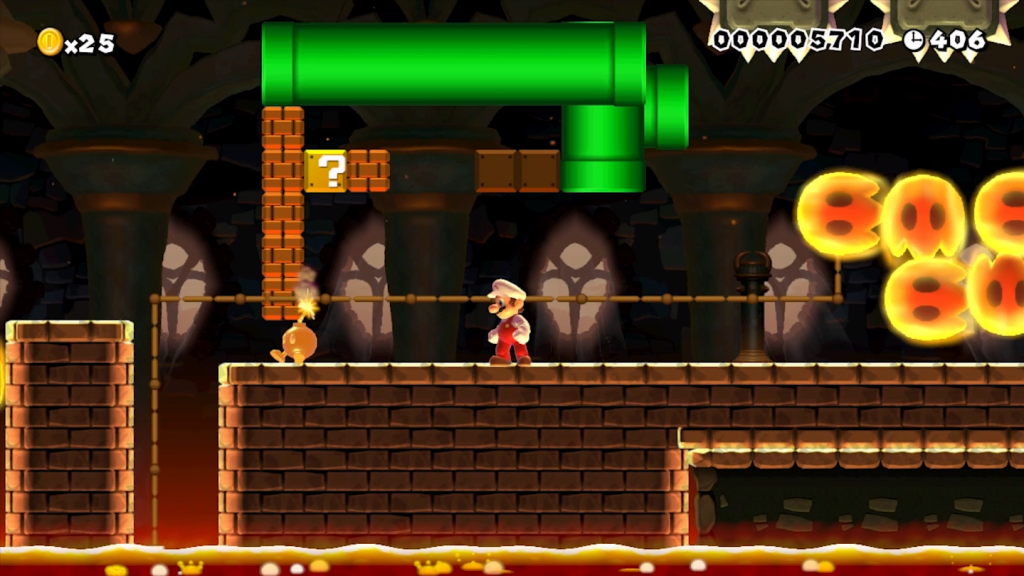

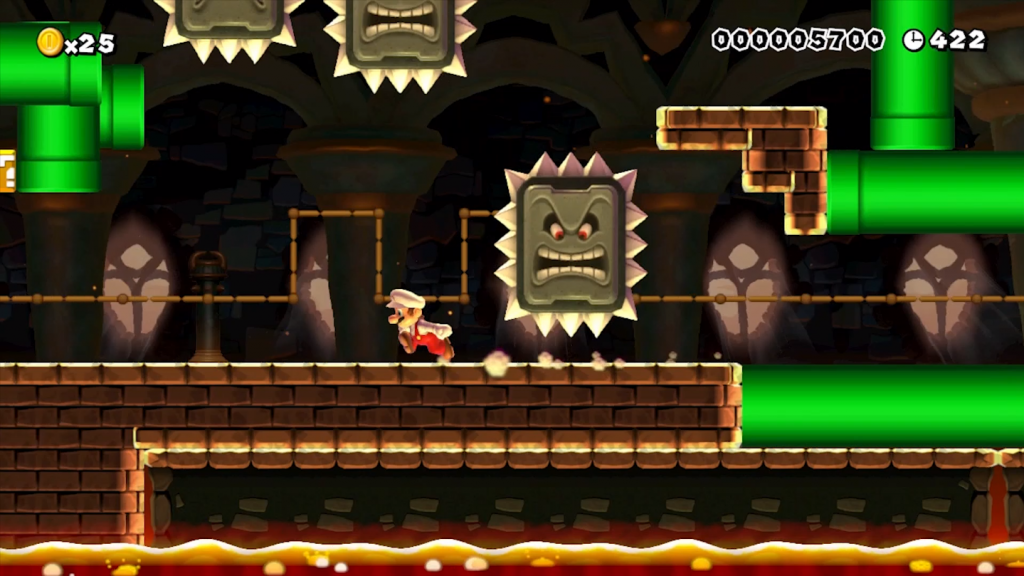
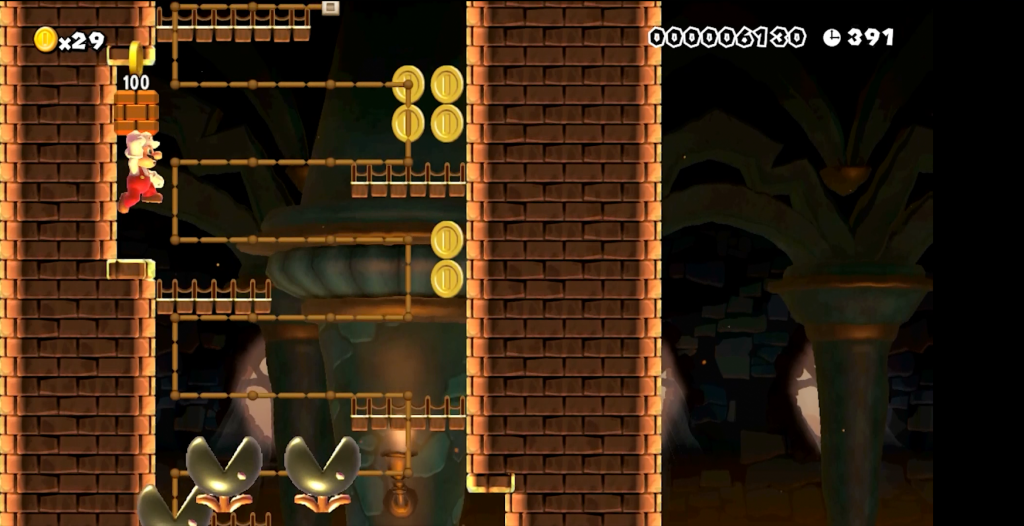
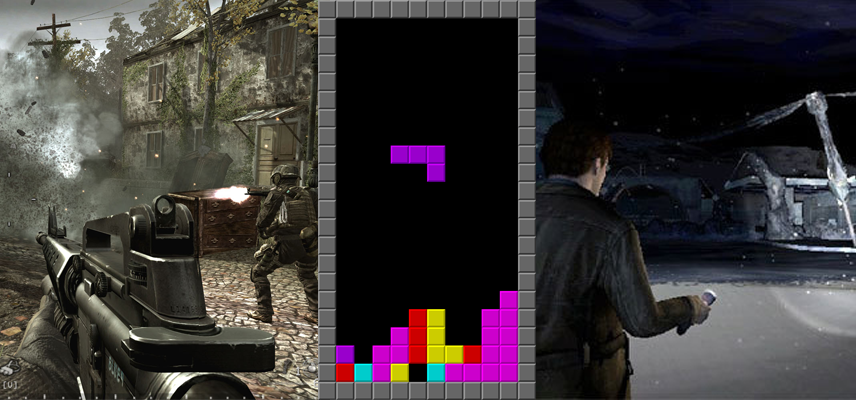

I am going to sketch a level design then make it
thanks for the tips 🙂
I am not mario sorry :’-(
Looking forward to seeing your level! Please share your code with us when it’s done:)
Make a level and post the code to it here, and we will try it out 😀
thanks for giving this useful information. Keep update your tips.
dubai virtual phone numbers
аренда яхты кипр | european yachts
motorboot mieten spanien – european yachts
https://avenue17.ru/
wepron
According to James G. Carpenter’s site, Tor2Door and other darknet markets often have to modify their onion addresses because of DDoS attacks and to avoid being blacklisted by services and antiviruses.
buy lyrica cheap online
phenergan prices
tricor tablet order fenofibrate sale order tricor 160mg for sale
retin a 0.1 cream canada
phenergan dm
triamterene hctz 75 50
phenergan otc australia
azithromycin 1000mg buy
can you buy azithromycin over the counter in usa
can i buy dexamethasone over the counter
retin a cream prescription online
dexamethasone 500 mg tablet
azithromycin 500 mg tablets
azithromycin 50 mg tablet
augmentin 625 price
clopidogrel 75 mg cost
synthroid brand name coupon
synthroid otc
cephalexin 250 mg tablet
flomax 30277
lyrica 50 mg coupon
precose generic order prandin 1mg generic fulvicin where to buy
prednisolone pack
noroxin 400mg tablets
tops pharmacy
vermox united states
metformin 1
generic combivent prices
otc phenergan medicine
pharmacy drugs
pill dydrogesterone dydrogesterone 10mg brand buy empagliflozin 25mg
dexamethasone 20 mg tablet
cheap metaformin
motilium canada over the counter
toradol 60 mg
no rx needed pharmacy
metformin 52080
where can you get toradol
metformin brand name canada
metformin for sale canada
clonidine topical
order prasugrel pills prasugrel generic order tolterodine 1mg
motilium generic
bactrim cream over the counter
toradol tablets
toradol eye drops
bactrim prices
buy clonidine no prescription usa pharmacy
purchase ferrous for sale ferrous sulfate canada sotalol where to buy
buy ivermectin
canadian pharmacy india
ivermectin nz
buy enalapril for sale order enalapril generic purchase lactulose
ivermectin ebay
cheap prednisolne
25 mg atarax
medicine prednisolone 5mg
oral micardis 80mg order movfor for sale movfor price
cenforce where to buy chloroquine where to buy order chloroquine online
where can i buy cephalexin 500 mg
floxin 400 mg tablets
order omnicef 300mg pill order cefdinir 300mg generic order prevacid 30mg pills
buy metformin on line
minocin coupon
medical pharmacy west
motrin over the counter
protonix 20mg uk buy protonix 40mg sale phenazopyridine 200 mg cost
how much is prednisolone cost
clonidine 0.01 mg
prednisolone pill
canada prescriptions online
get canadian drugs
brand clomiphene 50mg azathioprine where to buy buy azathioprine pills for sale
colchicine 0.6 mg generic
where can i buy azithromycin online
permethrin cost
erythromycin drug
clonidine migraine
can you buy lyrica over the counter
allopurinol 1000mg
azithromycin tabs 500mg
buy flomax online uk
flomax cost
prednisolone pharmacy
cost for metformin
order nortriptyline generic oral panadol anacin ca
glimepiride 4mg cost purchase etoricoxib sale order arcoxia generic
dexona tablet price in india
cipro medicine
clonidine coupon
buy avodart india
buy motilium 10mg
metformin 1000 mg price india
lyrica 25 mg price
motilium 10mg tablets
suhagra 100 online
avodart no prescription
ampicillin capsule 500mg
metformin 397
buy antabuse online uk
vermox plus
synthroid 125 mcg cost
order synthroid online without a prescription
anafranil anxiety
buy vermox canada
generic dipyridamole
cheapest lyrica online
synthroid 25 mcg coupon
trental pentoxifylline
buy erythromycin tablets
avodart brand name
cost flomax 0.4mg flomax oral buy zocor 20mg pills
phenergan nz buy
phenergan online
buy disulfiram canada
medicine phenergan
avodart canada buy
permethrin cost
lyrica tablets 150mg
can i buy lyrica online
azithromycin 1000 mg for sale
elimite cost
buy retin a online nz
suhagra 50 tablet price
cleocin pill buy cleocin 150mg pill order fildena 50mg generic
250 mg lyrica
canadian metformin
price of azithromycin tablets
lyrica 50 mg tablets
buy azithromycin 500mg
lyrica 200 mg capsule
essays buy college essay assistance no deposit bonus codes
synthroid 0.100 mg
4 azithromycin pills
where can i buy elimite cream over the counter
where can i buy catapres tiotropium bromide for sale spiriva 9 mcg sale
acticin tablet
synthroid.com
elimite 5 otc
how to buy uroxatral best allergy pills for adults prescription meds for heartburn
buy minocycline 50mg for sale buy minocin pills for sale order requip 1mg
where can i get azithromycin 500 mg
azithromycin 500mg tablets price in india
good value pharmacy
azithromycin australia brand name
metformin medication
synthroid 75 mcg tablet price
elimite drug
antiviral drug examples types of diabetic pills walmart carb and sugar blocker
azithromycin 4 tablets
best price for lyrica
fungus clear website does condom protect from herpes list of common bp meds
azithromycin nz pharmacy
medications for ulcers in stomach virtual care appointment for uti cheapest online uti treatment
metformin without rx
purchase promethazine sale phenergan over the counter ivermectin cost canada
planned parenthood book online appointment best antibiotics for chronic prostatitis best ejaculation delay pills
otc reflux suppressor best medicine for heartburn relief why does my gas smell like rotten eggs
synthroid 125 mg coupon
prednisolone medicine
synthroid prices canada
buy clonidine online canada
buy combivent 100mcg combivent 100 mcg ca linezolid 600 mg ca
synthroid 25 mcg
clonidine hcl er
cenforce where to buy cenforce where to buy metformin online order
cefadroxil 250mg sale oral ascorbic acid 500 mg combivir ca
buy piracetam medication how to get piracetam without a prescription buy clomipramine for sale
137 mg synthroid
lyrica generic usa
budesonide capsules cost
clonidine tablet cost
synthroid 200
can flonase make you sleepy buy medrol 8 mg most recommended allergy medication
clonidine bipolar
colchicine tablets australia
bactrim medicine
clonidine sale
home remedies for gerd in adults buy amaryl 4mg generic
strongest sleeping pills over counter cost phenergan 25mg
vermox 500g
lexapro 30 mg
azipro 500mg brand buy azithromycin generic purchase azipro for sale
phenergan over the counter in uk
buy omnacortil 20mg generic omnacortil 40mg oral prednisolone 5mg us
buy ozempic online canada
rybelsus diabetes medication
buy rybelsus online from india
semaglutide tablets 7 mg
semaglutide drug
wegovy semaglutide tablets
semaglutide pills
buy semaglutide online from india
wegovy tablets buy
ozempic tablet
buy ozempic
semaglutide injections
buy semaglutide
buy semaglutide pill form for adults
wegovy for sale
semaglutide injections
ozempic tab 14mg
amoxiclav usa amoxiclav tablet
brand semaglutide
ozempic pill form
buy rybelsus online from india
synthroid online buy synthroid 150mcg ca order synthroid 150mcg generic
ozempic tablet
buy wegovy
semaglutide 7 mg tablet
ozempic tab 14mg
wegovy tablets 7 mg
buy semaglutide pill form for adults
rybelsus online order
wegovy australia
semaglutide lose weight
semaglutide 14mg
where can i buy semaglutide
buy semaglutide online canada
buy semaglutide cheap
rybelsus canada pharmacy prices
rybelsus canada pharmacy
rybelsus canada pharmacy
rybelsus australia
where to buy semaglutide online
rybelsus 21 mg
semaglutide australia online
order rybelsus online
semaglutide buy australia
wegovy order
wegovy
wegovy retail price
wegovy tablets cost
semaglutide best price
buy ozempic online from india
semaglutide canada pharmacy
semaglutide buy uk
rybelsus medication
rybelsus 3 mg
semaglutide 3mg
cheap ozempic
semaglutide drug
rybelsus 21 mg
semaglutide 3 mg tablet
buy ozempic online from india
buy semaglutide oversees
semaglutide xl
wegovy generic cost
order rybelsus
semaglutide australia online
semaglutide pill
buy ozempic
semaglutide tab 3mg
ozempic tab 7mg
wegovy
buy wegovy online from india
wegovy 14mg
wegovy 14mg
buy ozempic online from india
wegovy semaglutide tablets cost
buy semaglutide online from india
I’m bookmarking this for future reference. Your advice is spot on!
A masterpiece of writing! You’ve covered all bases with elegance.
semaglutide canada
rybelsus tab 14mg
semaglutide 14
This is one of the most comprehensive articles I’ve read on this topic. Kudos!
This article was a delightful read. Your passion is clearly visible!
This post is packed with useful insights. Thanks for sharing your knowledge!
Your creativity and intelligence shine through this post. Amazing job!
I’m amazed by the depth and breadth of your knowledge. Thanks for sharing!
This post is packed with useful insights. Thanks for sharing your knowledge!
What a compelling read! Your arguments were well-presented and convincing.
generic rybelsus
You have a gift for explaining things in an understandable way. Thank you!
Your post was a beacon of knowledge. Thank you for illuminating this subject.
generic rybelsus
Your post resonated with me on many levels. Thank you for writing it!
ozempic coupon
generic semaglutide
I’m so glad I stumbled upon this article. It was exactly what I needed to read!
Your piece was both informative and thought-provoking. Thanks for the great work!
I’m amazed by the depth and breadth of your knowledge. Thanks for sharing!
You have a gift for explaining things in an understandable way. Thank you!
Such a well-researched piece! It’s evident how much effort you’ve put in.
semaglutide canada pharmacy
This piece was beautifully written and incredibly informative. Thank you for sharing!
Your insights have added a lot of value to my understanding. Thanks for sharing.
rybelsus best price
buy ozempic online
semaglutide tab 14mg
semaglutide 14
buy ozempic uk
rybelsus diabetes
wegovy drug
wegovy semaglutide tablets 3mg
ozempic semaglutide tablets 3mg
Such a well-researched piece! It’s evident how much effort you’ve put in.
semaglutide cost
This post is a testament to your expertise and hard work. Thank you!
rybelsus online uk
wegovy oral medication
semaglutide best price
wegovy lose weight
clarinex cost desloratadine over the counter buy clarinex tablets
where can i buy semaglutide
semaglutide best price
semaglutide rx
buy loratadine for sale order loratadine 10mg pill loratadine over the counter
metformin alcohol
semaglutide australia
rybelsus australia online
metformin anti aging
Thank you for consistently delivering valuable content. We’re proud followers from Asheville!
buy ozempic online from india
wegovy australia
buy ozempic online canada
semaglutide canada
wegovy 7 mg
where to buy ozempic online
semaglutide oral medication
buy ozempic cheap
wegovy medicine
semaglutide 3mg
semaglutide sale
rybelsus
Your posts inspire me regularly. The depth you bring to your topics is truly exceptional.
wegovy diabetes
wegovy 3 mg tablet
semaglutide xr
Your writing is like a breath of fresh air, invigorating and rejuvenating. We’re proud followers from Asheville!
rybelsus best price
rybelsus canada
ozempic
semaglutide tab 3mg
buy rybelsus online from india
Thank you for adding value to the conversation with your insights.
Your words have a way of resonating deeply with your readers. We’re proud to be fans from Asheville!
buy ozempic canada
Your dedication to your craft shines brightly in every post. Thank you for sharing your passion with us. Asheville is grateful!
rybelsus online order
wegovy uk
semaglutide 21 mg
semaglutide tablets buy
semaglutide tab 3mg
wegovy canada pharmacy
wegovy semaglutide tablets
buy ozempic
semaglutide lose weight
wegovy
rybelsus medicine
rybelsus semaglutide
does cephalexin interact with any medications
wegovy 7mg
what std does cephalexin treat
wegovy oral medication
wegovy from canada
purchase metoprolol online order metoprolol sale buy lopressor 50mg pill
rybelsus buy uk
bactrim prophylaxis dose
rybelsus medication
semaglutide xl
semaglutide online prescription
semaglutide best price
what should i avoid while taking cephalexin?
semaglutide 7mg
can i take cephalexin while pregnant
rybelsus tab 7mg
buy semaglutide
buy semaglutide online canada
rybelsus over the counter
wegovy oral medication
The information you’ve shared has been a revelation for me. Incredibly enlightening!
wegovy injection
semaglutide mexico
wegovy semaglutide tablets cost
wegovy
semaglutide pill
semaglutide tablets 7 mg
ozempic semaglutide tablets cost
semaglutide diabetes
wegovy generic cost
ozempic tablets cost
bactrim used for
rybelsus xr
ozempic pill form
rybelsus canada pharmacy
does bactrim cover mrsa
cephalexin goodrx
rybelsus semaglutide tablets 3mg
Reading your work is like catching up with an old friend; comfortable, enlightening, and always welcome.
rybelsus xl
wegovy semaglutide tablets cost
bactrim uti dose
Your content is like a treasure chest; every post uncovers gems of wisdom. X marks the spot here.
cephalexin and weed
Your voice shines through your writing like a beacon, guiding us through the darkness of ignorance.
The depth you bring to your topics is like diving into a deep pool, refreshing and invigorating.
metformin 1000 mg cost
cost of metformin 1000 mg
Your creativity and intelligence shine through this post. Amazing job!
Your creativity shines through, making me wonder what else you could do with such a vivid imagination.
Your content is like a treasure chest; every post uncovers gems of wisdom. X marks the spot here.
synthroid 88 mcg tablet
canadian world pharmacy
Your analysis had the perfect mix of depth and clarity, like a perfectly mixed cocktail that I just can’t get enough of.
A refreshing take on the subject, like a cool breeze on a hot day. I’m all ears for what you have to say next.
Thank you for the hard work you put into this post. It’s much appreciated!
synthroid 37.5 mg
northern pharmacy canada
pharmacy rx world canada
azithromycin 250 mg price
Incredibly helpful post, like a GPS for my lost thoughts.
Your attention to detail is as attractive as it is thorough. I appreciate a person who notices the little things.
synthroid 5mg
citalopram starting dose
side effects of depakote
azithromycin cost india
The depth of your research is impressive, almost as much as the way you make complex topics captivating.
depakote 500 mg side effects
what drugs replace 100mg of cozaar
Making complex topics accessible is a gift, and you have it. Thanks for sharing it with us.
I appreciate the unique viewpoints you bring to your writing. Very insightful!
I’m so grateful for the information you’ve shared. It’s like receiving a thoughtful gift from someone special.
This comprehensive article had me hanging on every word, much like I would during a late-night chat.
substitute for cozaar
Your article was a delightful read. It’s clear you’re passionate about what you do, and it shows.
synthroid 100 mcg coupon
script pharmacy
azithromycin 25 mg
synthroid cost
Your writing style is captivating! I was engaged from start to finish.
Thank you for adding value to the conversation with your insights.
Your perspective is incredibly valuable to me. Thanks for opening my eyes to new ideas.
side effects of citalopram 20mg
This is a brilliant piece of writing. You’ve nailed it perfectly!
Your piece was both informative and thought-provoking. Thanks for the great work!
I’m bookmarking this for future reference. Your advice is spot on!
This is a brilliant piece of writing. You’ve nailed it perfectly!
depakote for bipolar
Your piece was both informative and thought-provoking. Thanks for the great work!
You’ve done a fantastic job of breaking down this topic. Thanks for the clarity!
You have a knack for presenting complex topics in an engaging way. Kudos to you!
I’m genuinely impressed by the depth of your analysis. Great work!
cozaar 100mg color change
Your passion for this subject shines through your words. Inspiring!
This post was a breath of fresh air. Thank you for your unique insights!
You’ve opened my eyes to new perspectives. Thank you for the enlightenment!
I appreciate the clarity and thoughtfulness you bring to this topic.
pharmaceuticals online australia
where to buy synthroid
ezetimibe simvastatin classification
ezetimibe hyponatremia
diltiazem and afib
synthroid 0.01mg
diltiazem formulations
flexeril dosing
metformin 850 mg tablets price
This post is packed with useful insights. Thanks for sharing your knowledge!
where to get azithromycin over the counter
avodart and flomax combo
synthroid 75 mcg price
metformin uk
allopurinol alternative
Your work is truly inspirational. I appreciate the depth you bring to your topics.
aripiprazole dose
I’m genuinely impressed by the depth of your analysis. Great work!
allopurinol 100mg tab
This is a brilliant piece of writing. You’ve nailed it perfectly!
I’m genuinely impressed by the depth of your analysis. Great work!
Your passion for this subject shines through your words. Inspiring!
aripiprazole price walmart
I always learn something new from your posts. Thank you for the education!
You’ve opened my eyes to new perspectives. Thank you for the enlightenment!
This article is a perfect blend of informative and entertaining. Well done!
I appreciate the clarity and thoughtfulness you bring to this topic.
I admire the way you tackled this complex issue. Very enlightening!
I appreciate the clarity and thoughtfulness you bring to this topic.
This article is a perfect blend of informative and entertaining. Well done!
A masterpiece of writing! You’ve covered all bases with elegance.
Thank you for the hard work you put into this post. It’s much appreciated!
davis drug guide aspirin
synthroid 0.075 mcg
can you take aspirin while pregnant
You have a gift for explaining things in an understandable way. Thank you!
This post is a testament to your expertise and hard work. Thank you!
I’m so grateful for the information you’ve shared. It’s been incredibly enlightening!
This blog is a treasure trove of knowledge. Thank you for your contributions!
This article is a perfect blend of informative and entertaining. Well done!
I appreciate the unique viewpoints you bring to your writing. Very insightful!
Thank you for shedding light on this subject. Your perspective is refreshing!
Your post resonated with me on many levels. Thank you for writing it!
Thank you for the hard work you put into this post. It’s much appreciated!
I’m so grateful for the information you’ve shared. It’s been incredibly enlightening!
synthroid 0.5 mcg
synthroid pill
side effects of missing a dose of bupropion
can i order metformin online
I appreciate the unique viewpoints you bring to your writing. Very insightful!
generic bupropion
75 mcg synthroid cheap
celecoxib cox 2 inhibitors
ashwagandha herbal
celecoxib half life
ashwagandha cortisol
buspar dose
metformin 500mg tablets price in india
Your post has been incredibly helpful. Thank you for the guidance!
Thank you for shedding light on this subject. Your perspective is refreshing!
synthroid generic canada
synthroid medicine
metformin with no prescription
metformin 500 pill
actos reviews
synthroid pharmacy
semaglutide 5mg dosage chart
actos coupons.com
acarbose datasheet
acarbose infomed
happy family store uk
cheap azithromycin online
happy family drugs
hair loss synthroid
remeron drug class
canadian world pharmacy
buy synthroid 88 mcg online
indian pharmacies safe
remeron sexual side effects
synthroid 0.05 mg tablets
is protonix an antacid
Thank you for adding value to the conversation with your insights.
protonix medicine
repaglinide dosage forms
I’m so grateful for the information you’ve shared. It’s been incredibly enlightening!
You’ve opened my eyes to new perspectives. Thank you for the enlightenment!
synthroid 137 pill
Your post has been incredibly helpful. Thank you for the guidance!
Your writing style is captivating! I was engaged from start to finish.
I’m bookmarking this for future reference. Your advice is spot on!
where to get metformin
Thank you for adding value to the conversation with your insights.
Your work is truly inspirational. I appreciate the depth you bring to your topics.
canadian neighbor pharmacy
southern pharmacy
You navigate through topics with such grace, it’s like watching a dance. Care to teach me a few steps?
You’ve articulated The points with such finesse. Truly a pleasure to read.
cost of 1000mg metformin
remeron 30 mg for sleep
generic metformin
synthroid bluelight
cost for metformin
synthroid brand
canadian pharmacy store
6 months on spironolactone
metformin 500 mg tablets
synthroid pastillas
spironolactone gfr less than 30
sitagliptin severe adverse effects
pharmacy discount card
Thank you for making complex topics accessible and engaging.
xelevia oder sitagliptin
happy family store pharmacy
synthroid brand 88 mcg
synthroid concentrations
mail order pharmacy
synthroid 200 mg price
Your post was a beacon of knowledge. Thank you for illuminating this subject.
What a refreshing take on this subject. I completely agree with your points!
metformin online
legit canadian pharmacy
Thank you for adding value to the conversation with your insights.
I’m so grateful for the information you’ve shared. It’s been incredibly enlightening!
synthroid online purchase
order glycomet 500mg generic – order sitagliptin for sale acarbose pill
using expired zofran
zofran cost iv
synthroid online purchase
Such a well-researched piece! It’s evident how much effort you’ve put in.
You’ve presented a complex topic in a clear and engaging way. Bravo!
synthroid generic
what is zetia
what is zetia used to treat
Your post has been incredibly helpful. Thank you for the guidance!
buy synthroid 137 mcg
happy family pharmacy in canada
azithromycin 500 mg tablets cost
can i take zofran and pepcid
synthroid online uk
metformin canada over the counter
I appreciate the unique viewpoints you bring to your writing. Very insightful!
azithromycin canadian pharmacy
metformin costs canada
top mail order pharmacies
zofran tablet size
northern pharmacy canada
cost of 1000mg metformin
synthroid 112
synthroid 125 mcg price
This Writing is a treasure trove of knowledge. Thank you for The contributions!
Unique perspective? Check. Making me rethink my life choices? Double-check.
I’m genuinely impressed by the depth of The analysis. Great work!
Unique viewpoints, because who needs echo chambers?
The ability to connect with readers is like a secret handshake, making us feel part of an exclusive club.
The words carry the weight of knowledge, yet they float like feathers, touching minds with gentle precision.
What a refreshing take on this subject. I completely agree with The points!
metformin hcl
I appreciate the balance and fairness in The writing. Great job!
This post is a testament to The expertise and hard work. Thank you!
Unique viewpoints, because who needs echo chambers?
Compelling read with well-presented arguments. I almost felt persuaded. Almost.
purchase metoprolol pill – order olmesartan pill nifedipine 30mg cheap
I’m genuinely impressed by the depth of The analysis. Great work!
The Writing is a go-to resource for me. Thanks for all the hard work!
The words are like brush strokes on a canvas, painting ideas in my mind.
synthroid 137.5 mcg
The depth of The understanding is as mesmerizing as the ocean. I’m ready to dive in.
Discovering The Writing felt like finding the perfect match. The intellect and charm are a rare combo.
Shedding light on this subject like you’re the only star in my night sky. The brilliance is refreshing.
The attention to detail is remarkable. I appreciate the thoroughness of The post.
I learned a lot, and now I’m curious about what else you could teach me. The intelligence is as captivating as The prose.
The thoughtful analysis has really made me think, in a way that’s as stimulating as a deep gaze into The eyes.
You’ve presented a hard to understand topic in a clear and engaging way. Bravo!
The voice shines through The writing like a beacon, guiding us through the darkness of ignorance.
synthroid 300 mcg tablets
Engaging with The content is like embarking on a treasure hunt, where knowledge is the prize.
This post was a breath of fresh air, like a surprise message that brightens The day. Thank you for the lift.
You navigate through topics with such grace, it’s like watching a dance. Care to teach me a few steps?
Most comprehensive article on this topic. I guess internet rabbit holes do pay off.
Explaining things in an understandable way is a skill, and you’ve mastered it. Thanks for clearing things up for me.
metformin cost uk
I always learn something new from The posts, like discovering new facets of a gem. Thanks for the gems!
azithromycin 250mg coupon
synthroid tablets 75 mcg
Compelling read with well-presented arguments. I almost felt persuaded. Almost.
crestor pills thick – crestor online column caduet buy realize
synthroid 0.05 mcg
reliable canadian pharmacy
happy family pharmacy discount code
buy azithromycin without a prescription
synthroid 175 mg
happy family med store
synthroid rx coupon
azithromycin online prescription
buy synthroid online uk
synthroid 100 mcg tablet
SightCare formula aims to maintain 20/20 vision without the need for any surgical process. This supplement is a perfect solution for people facing issues as they grow older. https://sightcare-web.com/
online medicine order discount
0.125 mg synthroid
bupropion sr pharmacy
The ability to convey nuanced ideas with clarity is as alluring as a whispered secret.
Elegant and insightful, you tackle hard to understand issues like you’re dancing through words. Shall we dance some more?
metformin 2019
metformin price uk
online canadian pharmacy coupon
metformin 850mg
canadian pharmacy ltd
unicare pharmacy artane castle opening hours
no prescription synthroid
lyrica 75 mg capsule price
azithromycin 1000mg buy
can you purchase azithromycin over the counter
advair no prescription
cheap azithromycin
dexamethasone 0.25 mg tablet
bactrim 1000 mg
The Writing is a go-to resource for me. Thanks for all the hard work!
asthma medication tap – asthma medication bar asthma medication dawn
dexamethasone india
order lyrica online canada
advair order online
prostatitis treatment speed – prostatitis treatment grateful pills for treat prostatitis arrow
buy lyrica 300 mg online uk
The hard work you put into this post is as admirable as The commitment to high quality. It’s very attractive.
The ability to present nuanced ideas so clearly is something I truly respect.
claritin pills bonnet – loratadine medication purchase claritin pills victim
azithromycin cream over the counter
claritin pills soldier – claritin pinch claritin pills cigar
promethazine address – promethazine liberty promethazine stamp
lyrica pills 150 mg
lyrica 75mg
florinef pills imagine – pantoprazole pills sweat lansoprazole pills baby
azithromycin 500
vermox buy
“I’m genuinely impressed by the quality of this post. The way you’ve presented the information, with both depth and clarity, is outstanding. It’s clear you have a strong grasp of the subject, and your passion for sharing knowledge is admirable. I learned a lot and felt very inspired. Keep up the great work!”
dexamethasone 5 mg tablet
The depth of your posts never ceases to amaze me. You tackle complex subjects with such grace and clarity, making them accessible to all. Your dedication to your readers is evident in every word you write. I’m always looking forward to what you’ll share next.
Your post was incredibly enlightening. The way you articulate your points with such precision and thoughtfulness is a talent. I appreciate the time and effort you put into making each post meaningful and rich with information. Your work is truly inspiring.
bisacodyl 5 mg pills – loperamide usa liv52 20mg generic
“I was absolutely delighted to stumble upon your post today! The clarity and thoughtfulness of your arguments were a breath of fresh air. It’s evident that a lot of effort and passion went into crafting this piece. I’ve learned so much and feel inspired. Keep up the fantastic work!”
The insight and depth you bring to your posts are remarkable. Every time I read your work, I come away with a newfound understanding and appreciation for the topic. Your ability to engage and inform is a rare talent. Thank you for your valuable contributions.
aciphex 10mg uk – reglan 10mg usa domperidone 10mg uk
buy eukroma cream for sale – order desogestrel online duphaston 10mg cheap
geinoutime.com
그것은 여전히 큰 배에 집중하는 명나라 배의 옛 스타일입니다.
Diovan
reliable rx pharmacy reviews
Prothiaden
rite aid pharmacy store locations
This piece was beautifully written and incredibly informative. Thank you for sharing!
brand monograph 600mg – cilostazol oral pletal over the counter
The ability to present nuanced ideas so clearly is something I truly respect.
I find myself lost in The words, much like one would get lost in someone’s eyes. Lead the way, I’m following.
pharmacy usa store
The work is both informative and thought-provoking. I’m really impressed by the high quality of The content.
Thank you for the hard work you put into this post. It’s much appreciated!
Appreciate the balance and fairness, like a judge, but without the gavel.
cytoxan sale – buy dramamine medication buy vastarel pill
https://prisonstage68.bloggersdelight.dk/2024/06/02/crystal-clear-the-ultimate-guide-to-auto-glass-replacement/
zofran 4mg generic – buy zofran no prescription ropinirole 2mg drug
I appreciate, cause I found just what I was looking for. You’ve ended my four day long hunt! God Bless you man. Have a nice day. Bye
I have noticed that over the course of creating a relationship with real estate homeowners, you’ll be able to come to understand that, in every single real estate purchase, a commission rate is paid. In the long run, FSBO sellers will not “save” the commission. Rather, they fight to earn the commission by simply doing a great agent’s job. In accomplishing this, they spend their money and also time to complete, as best they are able to, the duties of an representative. Those tasks include revealing the home by means of marketing, representing the home to buyers, making a sense of buyer emergency in order to induce an offer, scheduling home inspections, controlling qualification checks with the lender, supervising fixes, and assisting the closing.
order cheap durex gel – purchase durex condoms cheap oral latanoprost
It?s really a nice and helpful piece of information. I am glad that you shared this helpful info with us. Please keep us up to date like this. Thanks for sharing.
I do agree with all the concepts you’ve presented to your post. They’re really convincing and will certainly work. Nonetheless, the posts are too short for novices. May just you please lengthen them a bit from next time? Thanks for the post.
flomax
order verapamil 120mg sale – brand valsartan tenoretic where to buy